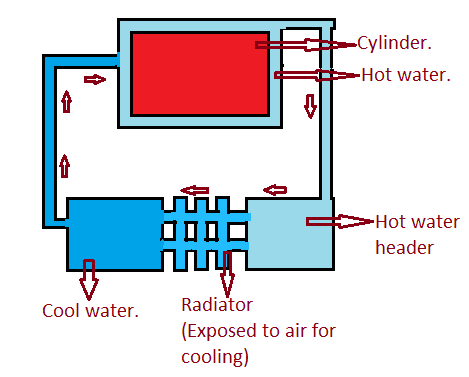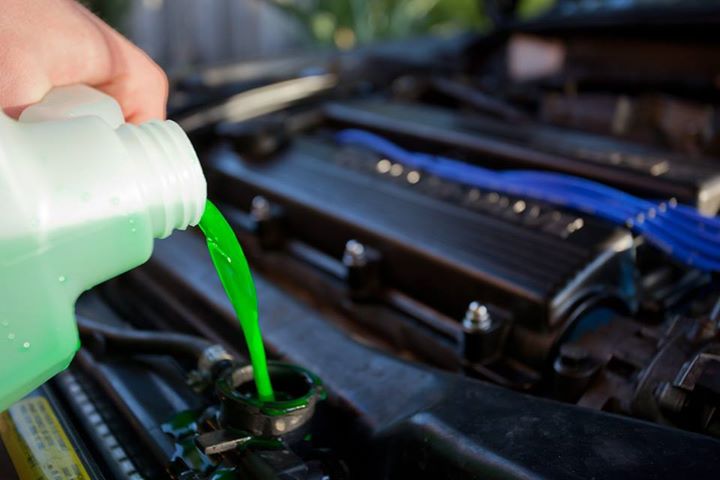Introduction: The choke cable is an important part of any vehicle’s engine system. It connects the carburetor or other type of fuel injection system to the engine control module (ECM) so that it can regulate air/fuel mixture and help start a cold engine. It also adjusts idle speed when a vehicle is running at different temperatures or altitudes. In this article, we’ll explain what a choke cable is and how it works.
What Is a Choke Cable?
A choke cable is a throttle cable that connects the carburetor or other type of fuel injection system to the engine control module (ECM). This cable helps regulate air/fuel mixture and helps start a cold engine. It is also used to adjust idle speed when a vehicle is running at different temperatures or altitudes. The choke cable allows the ECM to adjust the amount of fuel entering the engine based on the current temperature and altitude of the vehicle, as well as other factors like throttle position and RPMs.
How Does Choke Cable Work?
The choke cable works by controlling the flow of air into the engine’s intake manifold. When starting in cold weather, for example, more air needs to be let in for proper combustion; this extra air helps warm up the spark plugs faster so that they can ignite easier. When starting in warmer weather, less air needs to be let in because there’s already sufficient heat from outside sources. The ECM will use data from sensors located throughout the vehicle to determine how much air needs to be let in, and then send this information via signals through cables like the choke cable to open up or close down certain valves within the intake manifold accordingly.
The choke cable can also make adjustments based on altitude changes; high-altitude areas require slightly different settings than lower-altitude areas due to differences in atmospheric pressure. All these adjustments are made automatically by signals sent through cables like the choke cable, allowing your car’s engine to run smoothly regardless of where you are driving or what kind of weather you are driving in.
How do you fix a stuck choke cable?
To fix a stuck choke cable, first locate the cable and ensure that it is properly lubricated. If the cable is still stuck, try gently moving it back and forth to loosen any rust or debris that may be causing it to stick. If the cable is still not moving, it may be necessary to remove it from the vehicle and clean it more thoroughly. In some cases, the cable may need to be replaced if it is damaged or worn beyond repair. If you are unsure about how to fix a stuck choke cable, it is best to consult a professional mechanic for assistance.
What happens if choke stays closed?
If the choke stays closed, the engine may not receive enough air to start or run properly. This can cause the engine to run rich, meaning that there is too much fuel in the mixture, which can lead to poor performance, stalling, and/or difficulty starting. In some cases, it can also cause damage to the engine over time. Additionally, if the choke is closed when the engine is running, it will cause the engine to run poorly and produce too much emissions and exhaust.
If the choke is closed when the engine is running and the engine becomes hot, it can cause the engine to stall. In some cases, if the choke stays closed for an extended period, it can cause a build up of heat in the engine which can cause damage to the engine.
If the choke stays closed, it is important to address the issue as soon as possible to prevent further damage to the engine.
How do you lubricate a choke cable?
Lubricating a choke cable is a simple process that can help prevent it from sticking or becoming damaged. Here are the steps to lubricate a choke cable:
- Locate the choke cable: The choke cable is typically located near the carburetor or intake manifold on the engine.
- Clean the cable: Clean the cable by wiping it down with a clean rag or brush to remove any dirt, grime, or debris that may have accumulated on it.
- Apply lubricant: Apply a small amount of lubricant, such as cable lube or silicone spray, to the cable. You can use a small brush or a clean rag to spread the lubricant evenly over the cable.
- Work the cable: Move the cable back and forth a few times to work the lubricant into the cable. This will help to loosen any rust or debris that may be causing the cable to stick.
- Check the cable: Check the cable to ensure that it is moving smoothly and freely. Repeat the process if necessary.
It’s important to use the appropriate lubricant for the cable, not all lubricants are suitable for all types of cables, for example, penetrating oil is not suitable for plastic coated cables. Always check the manufacturer’s recommendations. Also, if the cable is visibly damaged, frayed or rusted it’s best to replace it.
What is the purpose of choke?
A choke is an electrical component that is used to limit the amount of current flowing through a circuit by providing a path of high reactance, typically used in power supplies and audio circuits to reduce noise and improve signal quality. The purpose of a choke is to smooth out and filter the current in a circuit, reducing the amount of ripple and noise present in the output. It also helps to reduce electromagnetic interference (EMI) and radio frequency interference (RFI) that can affect the performance of electronic devices.
Should choke be fully open?
It depends on the specific application and circuit in which the choke is being used. In some cases, a choke may be designed to be fully open, meaning that there is no restriction on the flow of current through the circuit. In other cases, a choke may be designed to have a certain level of restriction, or “inductance,” which is measured in units of henries (H).
For example, a choke used in a power supply may be designed to have a specific inductance value to filter out unwanted electrical noise and ripple from the output voltage. If the choke is fully open in this case, it may not be able to perform its intended function of filtering the power supply output.
It is important to consult the specifications and instructions provided by the manufacturer to determine the proper operating conditions for a specific choke.
What is choke valve used for?
A choke valve is a type of flow control valve that is used to regulate the flow of fluid in a pipeline or process system. It is typically used in the oil and gas industry to control the flow of oil or gas from a wellhead or production facility. The valve is designed to restrict the flow of fluid by reducing the size of the opening through which the fluid can pass.
The choke valve is used to control the pressure and flow rate of the fluid, which can be used to maintain a safe operating pressure in the pipeline, regulate the flow of fluid to downstream processing equipment, and prevent the formation of unwanted gas or water. Choke valves are also used to control the wellhead pressure during the drilling of oil and gas wells to prevent blowouts and other dangerous situations.
Choke valves are typically found in production and completion operations where it’s important to control the flowrate and pressure at the wellhead. They are also used in the process of artificial lift, where the pressure from the wellhead is not enough to bring the fluid to the surface.
How does a choke work in a circuit?
A choke works by providing a path of high inductance in a circuit, which limits the amount of current flowing through the circuit by introducing a “back EMF” that opposes the change of current. In simple terms, the choke acts as an inductor that stores energy in a magnetic field when current flows through it. The energy stored in the magnetic field opposes the change of current flow through the choke.
When the current flowing through a choke increases, the inductor resists the change by generating a back-EMF (electromotive force) in the opposite direction of the current flow. This back-EMF acts as a barrier to the flow of current and reduces the overall current flowing through the circuit.
In addition to limiting the current, a choke can also be used to filter unwanted electrical noise and ripple from the output of a circuit. The choke’s high inductance value allows it to act as a low-pass filter, which can remove high-frequency noise from the output signal.
Chokes are commonly used in power supplies and audio circuits to reduce noise and improve signal quality. It is also used in high-frequency circuits to suppress unwanted radio-frequency interference (RFI) that can affect the performance of electronic devices.
Why is it called a choke valve?
A choke valve is called so because it is designed to “choke” or restrict the flow of fluid through a pipeline or process system. It works by reducing the size of the opening through which the fluid can pass, which in turn reduces the flow rate of the fluid. This restriction of flow creates a pressure drop across the valve, which can be used to control the pressure and flow rate of the fluid.
The term “choke” is used because the valve is acting as a restriction in the flow path, similar to how a choke in a carburetor of an internal combustion engine can restrict the flow of air to control the fuel-air mixture. The term “choke” is a metaphor for the action of the valve to restrict the flow rate in a similar way that a physical choke would restrict the flow of air.
It’s also worth noting that the term “choke” is used in the drilling and oil and gas industries, where the choke is used to control the flow rate of fluid from the wellhead and prevent blowouts and other dangerous situations.
Conclusion:
In conclusion, understanding how a choke cable works can help you keep your car running smoother for longer periods of time. A well-maintained choke cable should last for many years with regular maintenance and inspection checks every now and then; if you notice any issues with your car’s performance, it could be time for a new one! Be sure to consult your owner’s manual or ask an experienced mechanic if you have any questions about your car’s choke cable – after all, safety always comes first!


